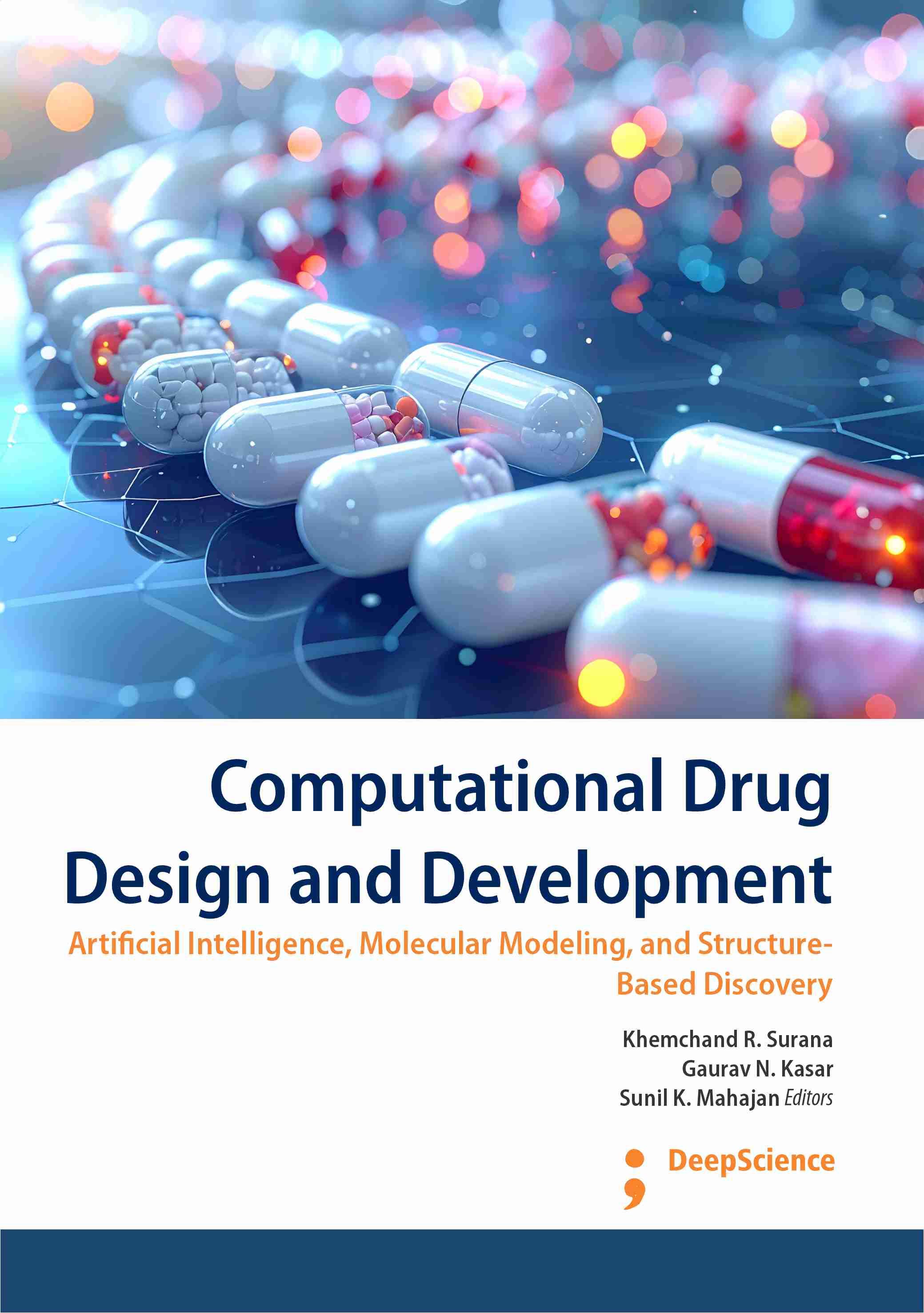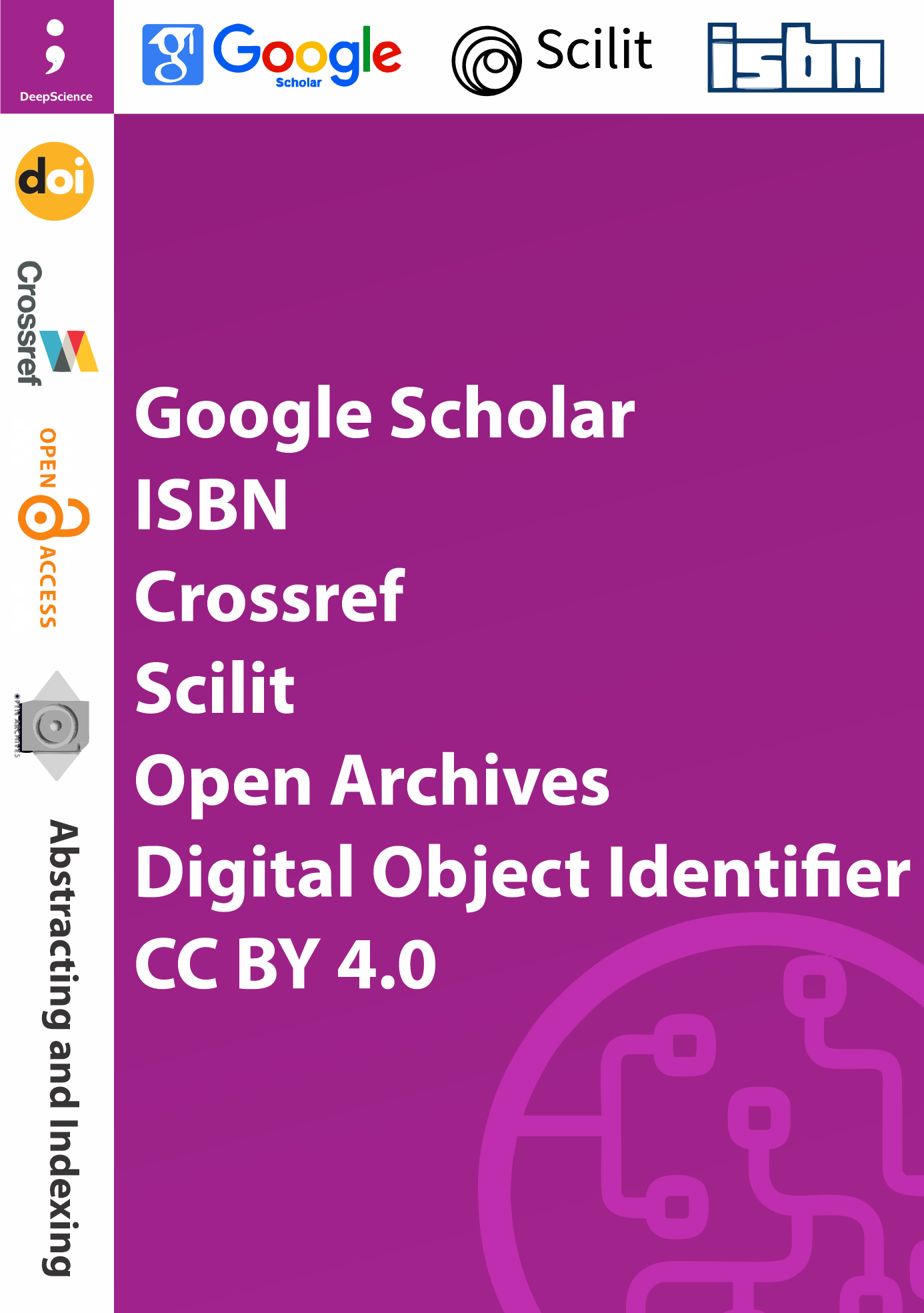Computational Drug Design and Development: Artificial Intelligence, Molecular Modeling, and Structure-Based Discovery
Keywords:
Artificial Intelligence, Drug Design, Drug Development, Molecular Modeling, Machine Learning, Deep LearningSynopsis
For us editors, writing “Computational Drug Design and Development: Artificial Intelligence, Molecular Modeling, and Structure-Based Discovery” has been an interesting and educational experience. We have seen the quick development of computational tools in the pharmaceutical sciences over time. What was formerly thought of as a specialized method is now a crucial component of research and drug development. We have attempted to convey these developments in a way that is understandable, useful, and significant for scholars, professionals, and students in this book. The groundwork is laid in the first chapter, Novel Techniques of Drug Design and Development, which outlines the fundamentals of contemporary computational drug design. It makes a distinction between structure-based and ligand-based methods and considers how machine learning and artificial intelligence are progressively shortening development times while increasing forecast accuracy.
Pharmacophores are covered in detail in the second chapter, Pharmacophore-Based Drug Design and Drug Delivery. The chapter describes how software tools such as MOE and LigandScout help find important chemical interactions and direct drug delivery tactics, as well as how three-dimensional pharmacophore models are constructed.
Drug Metabolism and Pharmacokinetics (DMPK) Profiling is the main subject of Chapter 3. Here, we have highlighted the importance of in-silico ADME prediction using tools like Simcyp and GastroPlus, particularly in safety and regulatory assessments.
The focus of the fourth chapter, Drug Design Approaches for Biotechnology, is on biologics, including proteins, peptides, and monoclonal antibodies. This chapter discusses how computational techniques are being applied to solve problems with stability, delivery, and immune response in the design of biologics. The use of QSAR models to improve predictive reliability is presented in chapter five, The Concept of Pharmacophore Mapping, along with techniques for virtual screening, hit detection, and lead optimization.
An overview of popular computational programs, such as AutoDock, GOLD, GROMACS, AMBER, SwissADME, and pkCSM, is given in Chapter 6. Since these are particularly helpful for academic and laboratory learning, we have also included widely used open-source software. Toxicity Prediction by Computational Software is covered in Chapter 7. Early prediction using tools like VEGA QSAR, TOPKAT, and Derek Nexus can greatly lower risks throughout development because toxicity is still a key reason of drug withdrawal.
We hope that the case studies, comparison tables, and workflow diagrams in the final section will aid in practical comprehension. We also provide a brief overview of how artificial intelligence will influence drug creation in the future.
We sincerely hope that this book proves helpful to its readers. If it encourages curiosity or sparks new research ideas, we will consider our effort worthwhile.
References
Amorim, A.M.B., Piochi, L.F., Gaspar, A.T., Preto, A.J., Rosário-Ferreira, N. & Moreira, I.S. (2024) Advancing drug safety in drug development: bridging computational predictions for enhanced toxicity prediction. Chemical Research in Toxicology, 37, pp.827–849.
Fäs, L., Chen, M., Tong, W., Wenz, F., Hewitt, N.J., Tu, M. et al. (2025) Physiological liver microtissue 384-well microplate system for preclinical hepatotoxicity assessment of therapeutic small molecule drugs. Toxicological Sciences, 203, pp.79–87.
Pérez Santín, E., Rodríguez Solana, R., González García, M., García Suárez, M.D.M., Blanco Díaz, G.D., Cima Cabal, M.D. et al. (2021) Toxicity prediction based on artificial intelligence: a multidisciplinary overview. WIREs Computational Molecular Science, 11, e1516.
Cavasotto, C.N. & Scardino, V. (2022) Machine learning toxicity prediction: latest advances by toxicity end point. ACS Omega, 7, pp.47536–47546.
Gadaleta, D., Spînu, N., Roncaglioni, A., Cronin, M.T.D. & Benfenati, E. (2022) Prediction of the neurotoxic potential of chemicals based on modelling of molecular initiating events upstream of the adverse outcome pathways of (developmental) neurotoxicity. International Journal of Molecular Sciences, 23, 3053.
Tolosa, J., Serrano Candelas, E., Vallés Pardo, J.L., Goya, A., Moncho, S., Gozalbes, R. et al. (2023) MicotoXilico: an interactive database to predict mutagenicity, genotoxicity, and carcinogenicity of mycotoxins. Toxins, 15, 355.
Gupta, M., Sharma, R. & Kumar, A. (2020) Docking techniques in toxicology: an overview. Current Bioinformatics, 15, pp.600–610.
Di Stefano, M., Galati, S., Piazza, L., Granchi, C., Mancini, S., Fratini, F. et al.(2024) VenomPred 2.0: a novel in silico platform for an extended and human interpretable toxicological profiling of small molecules. Journal of Chemical Information and Modeling, 64, pp.2275–2289.
Guo, W., Liu, J., Dong, F., Song, M., Li, Z., Khan, M.K.H. et al.(2023) Review of machine learning and deep learning models for toxicity prediction. Experimental Biology and Medicine (Maywood), pp.1–14. doi:10.1177/15353702231209421












